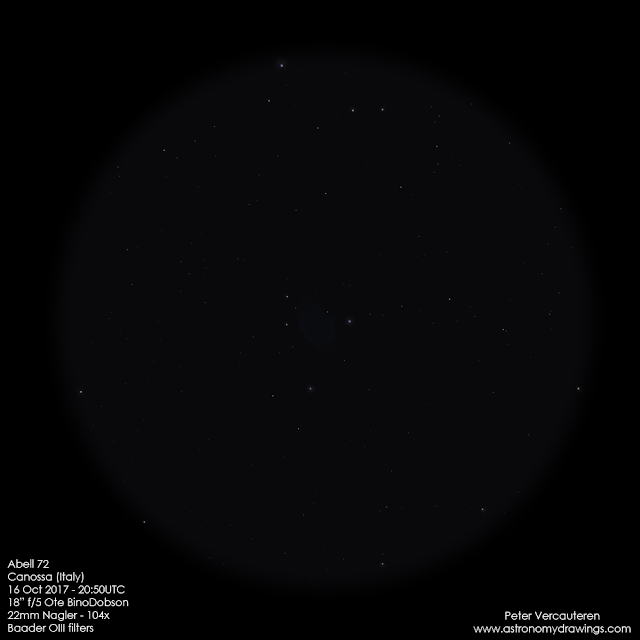I already told you about Abell objects in a recent post and explained that usually they're extremely difficult and even at the limit of large telescopes. Abell 82 is one of the exceptions and even showed some remarkable detail in my binoscope. Number 72 on Abell's list, on the other hand, is another pair of shoes. It's a very difficult planetary nebula that resides in the lovely summer constellation of Delphinus. Its considerable distance of 4,200 light-years explains its faintness in part, but more important is that this nebula has grown over two and a half light-years in diameter and therefore its feeble light is distributed over a large surface. If you'd like to take on this challenge, approach it with as much aperture as you can get your hands on, low power and an OIII filter to maximise contrast. Did I mention that you're going to need a very good sky too? Well, I guess that was already obvious.
Not a lot is known about this obscure nebula. Given its size, it must be quite old, probably more than 10,000 years, and nearing the end of its existence. Its central star (invisible to me) still appears to be quite hot, at least 100,000°C on its surface, but it's no longer able to fully ionise the enormous gas bubble it ejected and blew up to its current proportions. Soon, interstellar winds will tear the bubble apart and the nebula will completely dissipate into space whereas the remaining white dwarf will extinguish very slowly.
Look very carefully!

No comments:
Post a Comment